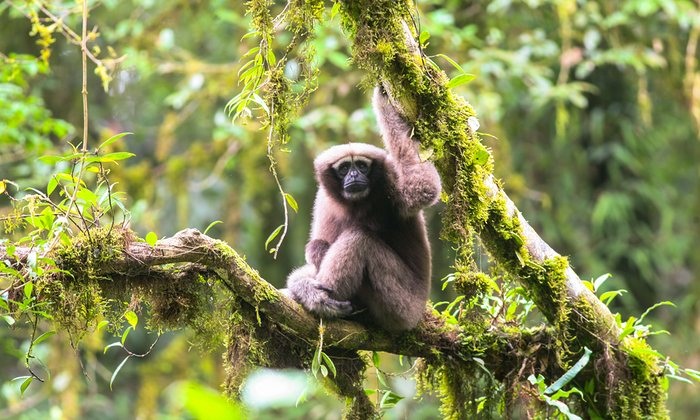New species of gibbon discovered in China

It has been named the Skywalker hoolock gibbon by its discoverers, who are Star Wars fans. The name is also a nod to the fact that the Chinese characters of its scientific name, Hoolock tianxing, mean “Heaven’s movement”.
Dr Sam Turvey, from the Zoological Society of London, who was part of the team studying the apes, told BBC News: “In this area, so many species have declined or gone extinct because of habitat loss, hunting and general human overpopulation.
“So it’s an absolute privilege to see something as special and as rare as a gibbon in a canopy in a Chinese rainforest, and especially when it turns out that the gibbons are actually a new species previously unrecognised by science.”
The research team, led by Fan Peng-Fei from Sun Yat-sen University in China, first suspected that the gibbons they were studying in Gaoligongshan nature reserve in Yunnan province might be different because of subtle differences in the typical facial markings of white eyebrows and beards.
Gibbons are renowned for their loud song, which they use to mark territory, and this also sounded unusual.
A full genetic and physical comparison with other gibbons then confirmed that they had found a new species.
The scientists estimate that about 200 Skywalker gibbons are living in China and also potentially in neighbouring Myanmar, but say that the species should already be classified as endangered. Habitat loss and fragmentation is putting the gibbons at risk of extinction.
In the Gaoligongshan nature reserve where the gibbons were discovered scientists had to trek up to 2,500m to find suitable habitat as “everywhere below there has been logged”, Dr Turvey said to the BBC.






































-1741856732.jpg&h=120&w=187&zc=1&q=70')








